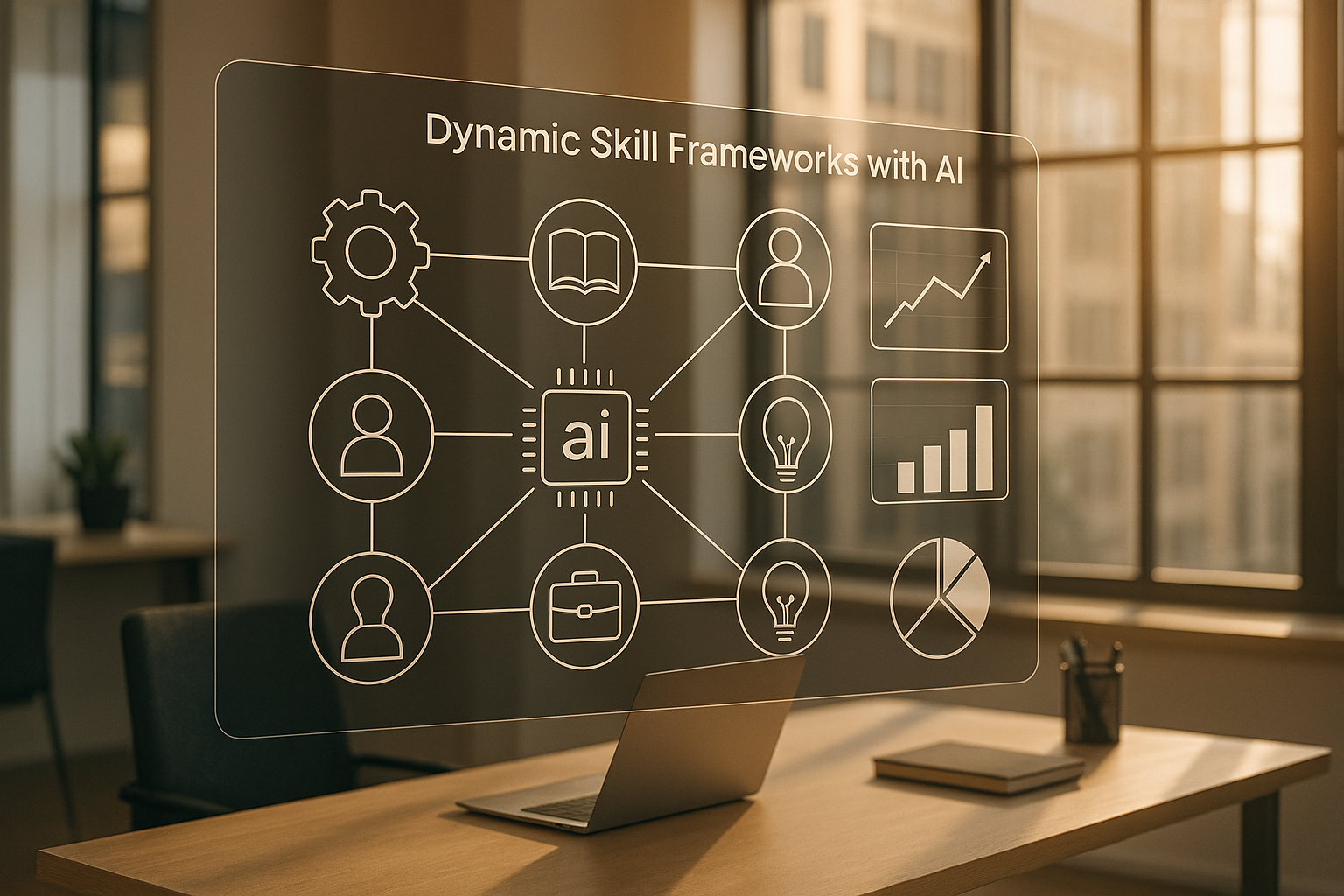Deep learning is transforming cybersecurity by detecting threats that traditional methods often miss. It processes vast amounts of data in real time, identifying unusual behaviors and patterns. Here's what you need to know:
- What it is: Deep learning uses neural networks to analyze raw data, finding anomalies without manual feature selection.
- Why it matters: It excels at detecting zero-day exploits, analyzing behavioral patterns, and reducing false positives.
- How it works:
- Data Collection: Gathers logs, user activities, and traffic data.
- Model Training: Uses architectures like CNNs, RNNs, and Transformers to learn from labeled data.
- Real-Time Monitoring: Detects threats instantly and adapts to new attack methods.
- Applications: Intrusion detection, malware classification, and insider threat monitoring.
For small businesses, platforms like AI directories simplify adoption by offering tailored tools and support. Deep learning isn't just for large enterprises - it's a practical way to stay ahead of evolving cyber threats.
How to Implement an Intrusion Detection System Using Deep Learning and Python
Steps in Deep Learning-Based Threat Pattern Recognition
Deep learning systems for threat detection work through a sequence of three key phases. Each step sharpens the system's ability to identify even the most subtle threat patterns, making it a powerful tool in cybersecurity.
Data Collection and Preprocessing
The backbone of any deep learning threat detection system is gathering diverse data. Security teams pull information from multiple sources like network logs, endpoint activity records, and user behavior logs. By combining data from various origins, the system can better differentiate between normal operations and suspicious actions.
Preprocessing raw data is essential to make it usable for neural networks. This step involves standardizing and filtering the data, ensuring that only relevant and clean information is passed on for analysis.
Feature extraction focuses the system on critical threat indicators instead of overwhelming it with every byte of data. For example, it might track unusual port usage, spikes in data transfer volumes, or odd communication patterns between internal and external systems. This targeted approach reduces the computational load while keeping detection precise.
One of the toughest parts of this phase is data labeling. Security teams must classify historical data into categories like legitimate activities and confirmed threats. These labeled examples form the foundation for training the neural network, teaching it to distinguish between everyday activities and potential attacks.
Model Selection and Training
Once the data is cleaned and labeled, the next step is selecting the right neural network architecture. The choice depends on the types of threats the organization is most likely to encounter.
- Convolutional Neural Networks (CNNs) are excellent for analyzing structured data, making them ideal for tasks like inspecting network packet sequences or identifying malware signatures in files.
- Recurrent Neural Networks (RNNs) and Long Short-Term Memory (LSTM) networks are better suited for time-series data. These models can track how user behavior changes over time, which is crucial for spotting slow-developing threats like insider attacks or account takeovers.
Training the model involves feeding it a large number of labeled examples and fine-tuning its parameters through cross-validation. This process helps the model generalize its learning to new, unseen data. Training often requires significant computational power, with GPUs handling the heavy lifting. Depending on the model's complexity, training can take anywhere from a few hours to several days.
Hyperparameter tuning is a critical step in optimizing the model. Adjusting settings like the learning rate or network depth ensures the system strikes the right balance between accuracy and efficiency, allowing it to detect threats without slowing down operations.
Real-Time Inference and Adaptation
Once trained, the model moves into active monitoring, where it analyzes live data streams for signs of threats. This inference phase processes network traffic, user actions, and system events in real-time, comparing them against the threat patterns it has learned.
The system assigns confidence scores to potential threats, ranking them based on how closely they match known attack behaviors. High-confidence threats trigger immediate security actions, while medium-confidence events undergo further analysis to minimize false alarms.
Continuous learning mechanisms ensure the model stays effective as new threats emerge. When analysts confirm new attack types or identify false positives, this feedback updates the model, helping it adapt to the changing threat landscape. This ongoing learning is vital for tackling zero-day exploits and reducing response times.
The system also integrates with automated response tools, enabling it to isolate compromised systems, block malicious connections, or alert security teams when high-risk threats are detected. This rapid response capability minimizes the window of vulnerability.
To maintain performance, the system includes drift detection. This monitors whether the model's accuracy declines as the network environment evolves. If performance drops below acceptable levels, the system initiates retraining with updated datasets that reflect the latest operational patterns and threats.
These steps highlight how deep learning enhances cybersecurity, making it a critical component in combating modern threats.
Deep Learning Architectures for Threat Identification
Deep learning continues to revolutionize cybersecurity by offering specialized architectures tailored to different types of threats. These neural network models enable security systems to address specific challenges with precision, providing more effective defenses.
Convolutional Neural Networks (CNNs)
CNNs are particularly adept at identifying spatial patterns in data, making them valuable for cybersecurity tasks that involve structured information. They can transform data into visual formats, revealing patterns that might otherwise go unnoticed.
In malware detection, CNNs create "binary visualizations" of executable files. By converting bytes into pixels, they expose internal structures of programs. For example, malicious software often appears as dense, uniform blocks, while legitimate programs display more varied and recognizable patterns.
Another key application is network packet analysis. CNNs help security teams scrutinize packet headers and payloads, identifying anomalies like SQL injections, buffer overflows, or command injections. Their ability to detect these subtle variations makes them indispensable for analyzing network traffic.
CNNs also shine in phishing detection. By analyzing screenshots of websites, they can identify visual elements such as logos, layouts, and color schemes. This allows them to catch fake websites that mimic legitimate ones but introduce minor changes designed to deceive users.
Additionally, these networks can process registry and file system changes. Malware often alters system files or creates new registry entries. CNNs detect these modifications and link them to broader attack patterns, even when individual changes seem harmless.
While CNNs excel at spatial data analysis, sequential models like RNNs and LSTMs are better suited for analyzing data over time.
Recurrent Neural Networks (RNNs) and LSTMs
RNNs and their variant, Long Short-Term Memory (LSTM) networks, specialize in analyzing sequential data. Their ability to retain memory of past events makes them perfect for identifying threats that develop gradually.
In user behavior analytics, LSTMs track typical access patterns, such as login times, file usage, and network activity. When users deviate from these established norms - like accessing unusual files at odd hours or transferring large amounts of data - the system flags potential insider threats or compromised accounts.
LSTMs are also highly effective for network traffic analysis. They monitor traffic flow sequences, identifying subtle changes that might signal reconnaissance efforts or data exfiltration attempts. Unlike rule-based systems that rely on predefined signatures, LSTMs detect anomalies that evolve over time.
For command sequence analysis, RNNs track system administration activities. Legitimate administrators tend to follow predictable workflows, while attackers often deviate from these patterns. LSTMs learn these normal behaviors and flag unusual command sequences that could indicate privilege escalation or lateral movement.
These networks excel at temporal correlation analysis, linking seemingly unrelated events over time. For instance, an LSTM might connect suspicious DNS queries from last week with unusual file transfers today, uncovering a multi-stage attack that traditional systems might overlook.
Transformer-Based Models
Transformers bring a different approach to threat detection by using attention mechanisms to focus on key elements in complex datasets. They are particularly powerful for analyzing relationships and context across large volumes of information.
One standout use case is log analysis. Security logs often contain thousands of entries, many of which are interdependent. Transformers use self-attention to identify connections between log entries, even when they are separated by hundreds of other events. This helps security teams trace attack chains and understand how threats propagate through networks.
Transformers are also invaluable for natural language processing tasks, such as analyzing threat intelligence reports and security advisories. They can extract critical indicators of compromise from unstructured text, automatically updating detection systems with the latest threat information. Additionally, they monitor social media and dark web communications to spot emerging attack trends.
In multi-modal threat detection, transformers analyze multiple data types simultaneously, such as network traffic, user behavior, and system logs. This comprehensive approach provides a more accurate picture of threats while reducing false positives.
Transformers also excel at code analysis, identifying malicious scripts or configuration files. Their understanding of programming syntax allows them to detect suspicious patterns, even when attackers use obfuscation techniques to hide their intent.
Finally, transformers are highly scalable, making them ideal for large organizations with complex IT infrastructures. They can process vast amounts of security data in parallel, maintaining efficiency even as networks grow in size and complexity. This ensures consistent performance, even as attack surfaces expand.
Applications and Use Cases of Deep Learning in Cybersecurity
Deep learning has become a game-changer in cybersecurity, offering specialized solutions through advanced data processing, model training, and real-time analysis. By refining threat detection processes, it now powers practical, targeted applications across various security domains.
Intrusion Detection Systems
Deep learning has revolutionized intrusion detection, moving beyond traditional signature-based methods. These systems monitor network traffic in real time, identifying unauthorized access attempts and malicious activities with impressive precision.
Modern intrusion detection systems (IDS) enhanced with deep learning establish baseline patterns of normal network behavior. They track metrics like data transfer volumes, connection frequencies, and protocol usage. When unusual activity occurs - such as unexpected data flows during off-hours or communications with unfamiliar external servers - the system flags these anomalies for immediate investigation.
Network segmentation monitoring is another key feature, focusing on traffic between network segments. This helps identify lateral movement attempts, where attackers move from compromised endpoints to critical systems, even when using legitimate credentials or protocols.
Deep learning also excels in packet-level protocol analysis, detecting subtle anomalies in protocol implementations. This is particularly effective for spotting advanced persistent threats or zero-day exploits that evade traditional defenses.
What sets modern IDS apart is their adaptive learning capability. As network environments evolve and new applications are introduced, deep learning models adjust their understanding of normal behavior. This adaptability reduces false positives while maintaining high detection accuracy, paving the way for more precise malware classification.
Malware and Ransomware Classification
Deep learning is highly effective in identifying and classifying malware, including ransomware, by analyzing both static file characteristics and dynamic behavior. This dual approach enables the detection of malicious software before significant damage occurs.
Static analysis examines file headers, import tables, and code structures to uncover hidden malicious patterns. Even when attackers use techniques like encryption or compression to mask their code, deep learning models can detect the underlying intent.
Dynamic behavior analysis takes this a step further, observing how programs behave during execution in controlled environments. By monitoring system calls, file modifications, network activity, and registry changes, deep learning builds detailed behavioral profiles. This is especially useful for identifying polymorphic malware, which alters its code structure but retains consistent behavioral traits.
For ransomware, deep learning models monitor file system activity patterns, quickly identifying the rapid encryption behaviors typical of these attacks. They recognize sequential file modifications, changes in file extensions, and unusual disk activity, often within seconds of the attack starting.
Another critical capability is family classification, which groups malware samples based on shared code, behavior, and infrastructure. This helps security teams understand whether an attack is isolated or part of a larger campaign targeting specific industries.
Deep learning also supports predictive threat modeling, allowing systems to anticipate potential attack vectors based on current malware trends. This proactive approach strengthens defenses against emerging threats and enhances insider threat detection capabilities.
Behavioral Analytics for Insider Threat Detection
Detecting insider threats is a complex challenge, as it requires distinguishing between legitimate user behavior and potentially harmful actions. Deep learning tackles this by establishing baselines for each user, analyzing login times, application usage, file access, and data transfers. It accounts for natural variations while highlighting significant anomalies that may signal malicious intent.
Privilege escalation detection focuses on identifying unusual attempts to access restricted resources or perform administrative actions. This includes spotting atypical command sequences, unexpected file access patterns, or efforts to probe system boundaries.
Data exfiltration prevention is another critical application. Deep learning models monitor normal data flow patterns within an organization, flagging activities like accessing large volumes of data, downloading files outside a user’s typical scope, or transferring sensitive information to external locations.
The technology also analyzes shifts in user behavior, such as accessing resources used by other departments or changes in communication patterns. These capabilities are particularly effective in detecting account takeover scenarios, where attackers use compromised credentials to act as legitimate users.
Deep learning models continuously monitor user behavior, identifying gradual changes that could signal data exfiltration risks. They also support risk scoring systems, which assign threat levels to users based on behavioral deviations. This helps security teams prioritize investigations and allocate resources more effectively.
sbb-itb-bec6a7e
Challenges, Benefits, and Best Practices
Using deep learning to identify threat patterns offers a mix of advantages and hurdles. By weighing both, organizations can make smarter decisions about adopting these technologies. This balance is especially important for small and medium-sized enterprises (SMEs) looking to strengthen their cybersecurity strategies.
Benefits of Deep Learning in Threat Detection
Deep learning excels at spotting complex threat patterns with impressive precision. Unlike rule-based methods, it can detect subtle anomalies and relationships within massive datasets, all while keeping false positives to a minimum.
Automation is another major plus. These systems can process vast amounts of security data without constant human input, which not only saves money but also helps address the shortage of skilled cybersecurity professionals. With analysts freed up from repetitive tasks, they can focus on more strategic priorities. This efficiency becomes even more impactful as businesses scale up their security operations.
Another standout feature is how these models adapt over time. By learning from new data, they adjust to evolving malware and attack techniques without needing manual updates or signature refreshes.
Deep learning also shines in identifying zero-day threats. Instead of relying on known signatures, it examines behavioral patterns to flag unusual activity. This makes it a valuable tool against sophisticated attacks designed to bypass traditional defenses.
Finally, scalability is a big advantage. As businesses grow, these models can handle increasing amounts of security data without requiring a proportional increase in staff.
Challenges in Implementation
Despite its strengths, implementing deep learning comes with challenges that need attention.
One major hurdle is the demand for computational resources. Training these models requires significant processing power and specialized hardware, which can drive up initial costs.
Data is another sticking point. Deep learning thrives on large volumes of high-quality, labeled data, which can be tough to gather and maintain.
Adversarial attacks pose a unique threat. Hackers can craft inputs specifically designed to confuse the model, leading to misclassifications. This means systems need constant updates as part of a broader defensive strategy.
Another issue is the "black box" nature of deep learning models. Their decision-making processes are often opaque, making it hard for security teams to understand why certain activities are flagged. This lack of transparency can complicate incident response and system improvements.
Lastly, integrating deep learning into existing security setups can be tricky. Legacy systems may not support the APIs or data formats these platforms require, often necessitating custom integrations or middleware solutions.
Best Practices for SMEs
For SMEs looking to adopt deep learning securely and effectively, here are some practical tips:
- Blend technologies: Combine deep learning with traditional security tools. For instance, deep learning models can pre-screen alerts, leaving rule-based systems to handle final classifications and responses.
- Focus on transparency: Opt for platforms that provide clear insights into their decision-making processes. This builds trust and helps teams understand threat classifications better.
- Prioritize data governance: Ensure security logs are consistently formatted, accurately timestamped, and properly labeled. High-quality data is essential for effective deep learning.
- Start small: Roll out deep learning gradually. Test it with specific use cases, like email security or endpoint protection, before expanding to other areas.
- Invest in training: Equip your team to interpret deep learning outputs and recognize when human intervention is needed. Understanding the technology’s limitations is key.
- Leverage the cloud: Cloud-based solutions can ease the burden of infrastructure demands. Many providers offer pre-trained models and managed services, simplifying the transition to advanced cybersecurity tools.
Using AI Tool Directories for Cybersecurity
As deep learning continues to improve threat detection, choosing the right cybersecurity tools has become just as important. For small and medium-sized enterprises (SMEs), this task can feel overwhelming. That’s where curated AI directories come in - they simplify the decision-making process by matching businesses with tools that align with their specific needs and budgets.
How AI for Businesses Simplifies AI Adoption

AI for Businesses functions as a one-stop directory that organizes and filters a wide range of cybersecurity AI tools. Instead of spending weeks (or even months) researching options, SMEs can access a pre-screened collection of tools tailored for business growth.
One of the biggest challenges smaller organizations face is limited resources. Many SMEs don’t have dedicated IT teams to evaluate complex deep learning solutions. AI for Businesses bridges this gap by presenting tools in an easy-to-understand format - ideal for decision-makers who may not have a technical background.
This directory is particularly helpful when it comes to cybersecurity. It eliminates the need to wade through confusing jargon or flashy marketing materials. Instead, business owners can quickly compare tools side-by-side, cutting evaluation time from months to just a few weeks.
Another standout feature is pricing transparency. The platform offers clear pricing options: a free Basic plan for limited access, a $29/month Pro plan for full access, and custom Enterprise solutions. This upfront clarity helps SMEs plan their budgets without fear of hidden costs popping up later.
For Pro subscribers, the directory also includes priority support. Having direct assistance during the setup phase can make all the difference between a smooth deployment and frustrating delays.
Supporting SMEs and Scale-Ups
Scale-ups face their own set of challenges when adopting deep learning cybersecurity tools. These businesses often need enterprise-level security but lack the resources or expertise of larger corporations. AI for Businesses caters to this market by featuring tools that grow alongside the business.
Understanding that SMEs work within tight budgets, the directory highlights tools with flexible pricing models. This ensures businesses can address current needs while leaving room for future expansion.
For SMEs stepping into the world of deep learning cybersecurity, implementation support is crucial. Unlike large companies with specialized security teams, smaller organizations often rely on general IT staff or outside consultants. The directory emphasizes tools that come with robust onboarding and training resources, making adoption much smoother.
Beyond cybersecurity, the platform also includes AI tools for other business functions, encouraging SMEs to build integrated strategies rather than relying on isolated solutions. This broader approach helps businesses maximize the benefits of AI across their operations.
For scale-ups experiencing rapid growth, the Enterprise plans offer custom integrations that adapt to evolving needs. This flexibility ensures that security systems can grow without requiring complete overhauls. Additionally, Enterprise customers benefit from dedicated support, addressing a common concern for expanding businesses: maintaining strong security during periods of rapid change. With access to expert guidance, businesses can ensure their AI-driven cybersecurity solutions remain effective as they scale.
Conclusion
Deep learning has reshaped the landscape of cybersecurity, offering a faster and more accurate way to identify threat patterns. Unlike older, rule-based systems, deep learning algorithms excel at adapting to new attack methods, spotting subtle behavioral anomalies, and analyzing massive datasets in real time. This adaptability is critical as cyber threats grow more complex and automated.
This technology isn't just theoretical - it has practical, impactful applications. From data collection to real-time analysis, neural networks are trained to distinguish normal activity from malicious behavior. Whether it's CNNs analyzing network traffic, RNNs detecting unusual sequences, or transformer models interpreting complex security data, these advanced architectures provide powerful defenses against modern cyber threats.
For small and medium-sized businesses, adopting deep learning for cybersecurity might seem daunting, but it doesn’t have to be. The key is finding tools that align with your organization's needs, budget, and technical expertise. Platforms like AI for Businesses offer scalable solutions, making it easier for companies of any size to tap into the protective capabilities of deep learning.
The real-world applications are vast - intrusion detection, malware classification, and insider threat monitoring are just a few examples. These tools not only reduce false alarms but also free up security teams to focus on actual threats rather than drowning in endless alerts.
As cyber threats continue to grow and evolve, deep learning remains a critical tool for staying ahead of attackers. By understanding how it works and leveraging the right platforms, organizations can build dynamic security systems that improve with every new challenge. This combination of cutting-edge techniques and accessible tools ensures that businesses can keep cyber attackers at bay and safeguard their operations effectively.
FAQs
How does deep learning enhance the detection of zero-day threats compared to traditional cybersecurity methods?
Deep learning takes zero-day threat detection to the next level by processing massive amounts of data in real time, spotting unusual behaviors and patterns that older, traditional methods might overlook. Unlike signature-based systems, which depend on pre-identified attack signatures, deep learning has the ability to catch previously unknown threats by picking up on subtle, often hidden anomalies.
By leveraging techniques such as unsupervised learning, deep learning models can reveal hidden vulnerabilities while also minimizing false positives. This forward-thinking approach allows for quicker identification and response to zero-day exploits, offering a clear edge over more conventional cybersecurity strategies.
What challenges do small businesses face when using deep learning for cybersecurity, and how can they address them?
Small businesses often face hurdles such as tight budgets, limited access to skilled staff, aging IT systems, and the rapid advancement of cyber threats when trying to implement deep learning for cybersecurity.
To tackle these challenges, small businesses can rely on AI-powered cybersecurity tools. These tools can automate threat detection, minimizing the need for specialized in-house expertise. Pairing this with employee training programs and adhering to strong cybersecurity practices can further enhance their defenses. By taking these steps, small businesses can protect themselves from cyber risks while making the most of AI-driven solutions.
How do CNNs, RNNs, and Transformers help detect cybersecurity threats in different ways?
Deep learning models such as CNNs, RNNs, and Transformers bring their own strengths to the table when it comes to identifying cybersecurity threats. Here's how they contribute:
- CNNs (Convolutional Neural Networks) are particularly good at spotting spatial patterns in data. This makes them effective for tasks like detecting anomalies in network traffic or identifying malicious files.
- RNNs (Recurrent Neural Networks) shine when dealing with sequential data. They're well-suited for uncovering time-based patterns, such as unusual malware behavior or suspicious command-and-control communications.
- Transformers leverage attention mechanisms to zero in on the most critical features within data. This approach delivers high accuracy and clarity for tasks like intrusion detection and malware analysis.
Whether used individually or together, these models provide powerful tools for analyzing complex data and helping organizations stay one step ahead of emerging threats.


